Letting the dough rise is one of the most important steps in the process of making pizza. How long should the pizza dough rise, though?
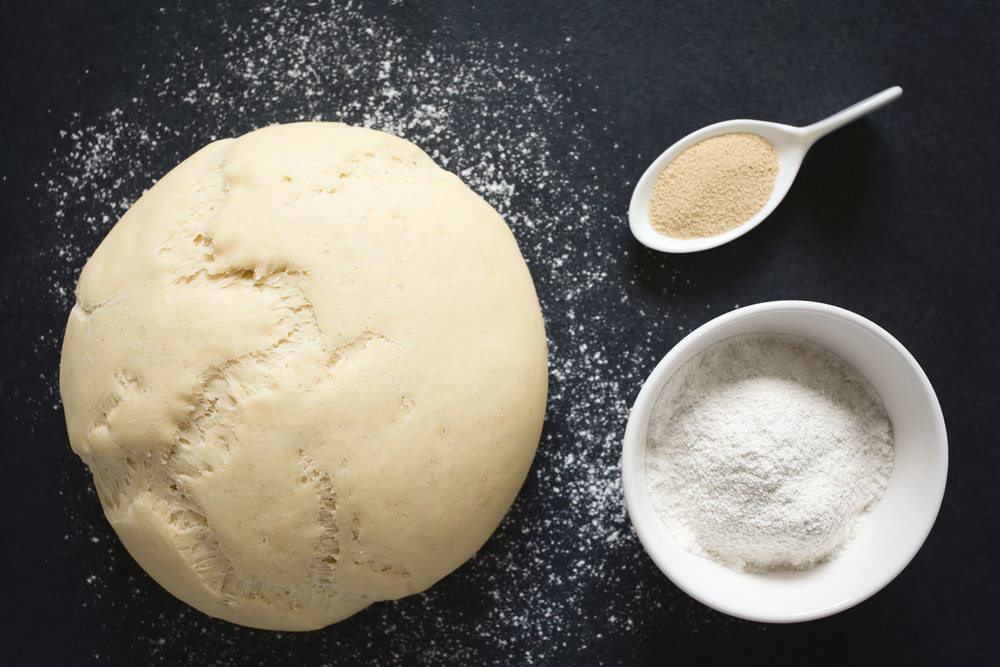
The sort of dough you’re using, the temperature in your kitchen, and how much time you have available can all affect the answer to this question.
Shorter rise times are preferred by some pizza makers, who only let the dough rest for an hour or two before shaping and baking.
Others decide to let the dough a longer rise, letting it ferment for up to 24 or even 48 hours. The flavor and texture of the dough can become more nuanced and developed as it rises for a longer period of time.
It’s vital to keep in mind, though, that letting your dough rise for an excessive amount of time might also have drawbacks, including making it too challenging to work with or giving it a sour taste.
The Basics of Pizza Dough Rising
At the heart of any great pizza is a great crust, and a great crust starts with properly risen dough. In this section, we will cover the basics of pizza dough rising, including what it is, factors that affect it, how long it should rise, and tips for a successful rise.
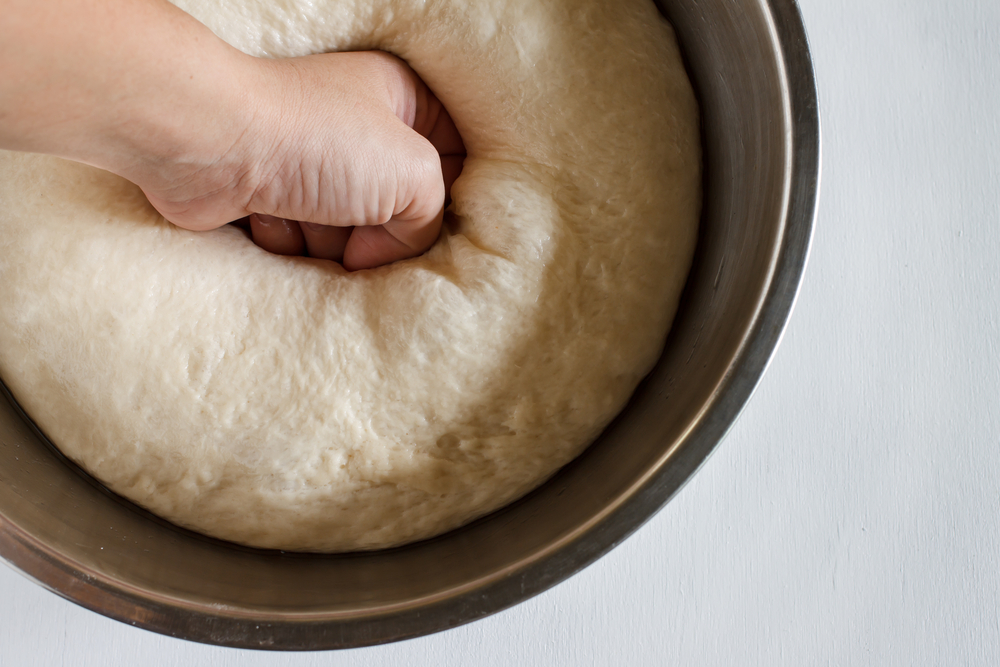
What is Dough Rising?
Dough rising is the process of allowing the dough to ferment and expand before baking. During this process, yeast consumes sugars in the dough and produces carbon dioxide gas, which becomes trapped in the gluten structure of the dough, causing it to rise. This fermentation process also develops flavor and texture in the dough.
Factors That Affect Dough Rising
Several factors can affect how the dough rises, including temperature, yeast, flour, water, salt, and sugar. Temperature is one of the most critical factors, as yeast is most active at warm temperatures between 75-85°F.
The type of yeast used, whether active dry, or fresh, can also affect rising time and flavor. The type of flour used, such as bread flour or all-purpose flour, can affect gluten strength and structure, while the amount of water, salt, and sugar can affect the texture, flavor, and rise of the dough.
How Long Should Pizza Dough Rise?
The length of time pizza dough should rise depends on several factors, including the type of yeast used, the temperature of the environment, and the desired texture and flavor of the crust.
Generally, pizza dough should rise for at least 1-2 hours at room temperature, or up to 24-48 hours in the refrigerator for a slow, flavorful rise.
Over-proofing can result in a weak, flat crust, while under-proofing can result in a dense, chewy crust.
Tips for a Successful Dough Rise
To ensure a successful dough rise, it’s essential to create a warm, moist environment for the dough to ferment, such as covering it with a damp towel or plastic wrap.
Kneading the dough thoroughly can also help develop gluten strength and structure while shaping the dough into individual balls can help it rise evenly.
Preheating the oven and pizza stone or pan can also help create a crisp, flavorful crust while adding toppings sparingly can prevent the crust from becoming soggy.
In summary, pizza dough rising is a critical step in creating a flavorful, textured crust. By understanding the factors that affect dough rising, how long it should rise, and tips for a successful rise, we can create delicious homemade pizza every time.
How to Tell If Your Dough Has Risen Enough
When making pizza dough, it’s important to know when it has risen enough so that it will bake properly and result in a delicious pizza.
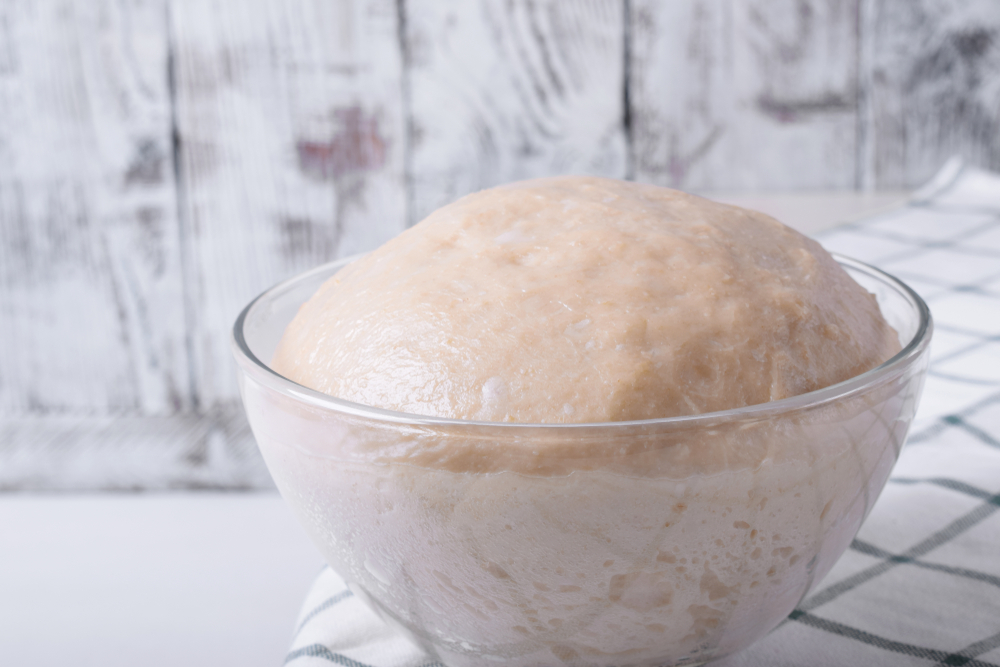
Here are a few ways to tell if your dough has risen enough:
Visual Cues
One of the easiest ways to tell if your dough has risen enough is by looking at it. A properly risen dough will double in size and have a smooth, puffy surface.
You should also be able to see air pockets throughout the dough. If your dough looks flat and dense, it may not have risen enough.
Touch Test
Another way to tell if your dough has risen enough is by touch. A properly risen dough will feel soft and elastic.
Gently press your finger into the dough, and it should spring back slowly. If it springs back quickly, it may not have risen enough. If it doesn’t spring back at all, it may have over-risen.
Dough Poke Test
The dough poke test is a more accurate way to tell if your dough has risen enough. Gently press your finger into the dough, and it should leave an indentation that slowly fills back in.
If the indentation doesn’t fill back in at all, the dough may not have risen enough. If it fills back in quickly, it may have over-risen.
| Test | Result |
|---|---|
| Visual Cues | Double in size, smooth surface, visible air pockets |
| Touch Test | Soft, and elastic, slowly springs back |
| Dough Poke Test | Leaves indentation that slowly fills back in |
By using these methods, you can ensure that your dough has risen enough which will result in a delicious pizza.
Remember to give your dough enough time to rise, as rushing the process can result in a dense, undercooked crust.
What Happens If You Over-Proof Your Dough?
When we over-proof our pizza dough, we allow it to rise for too long. This can lead to a few different issues that can affect the final product.
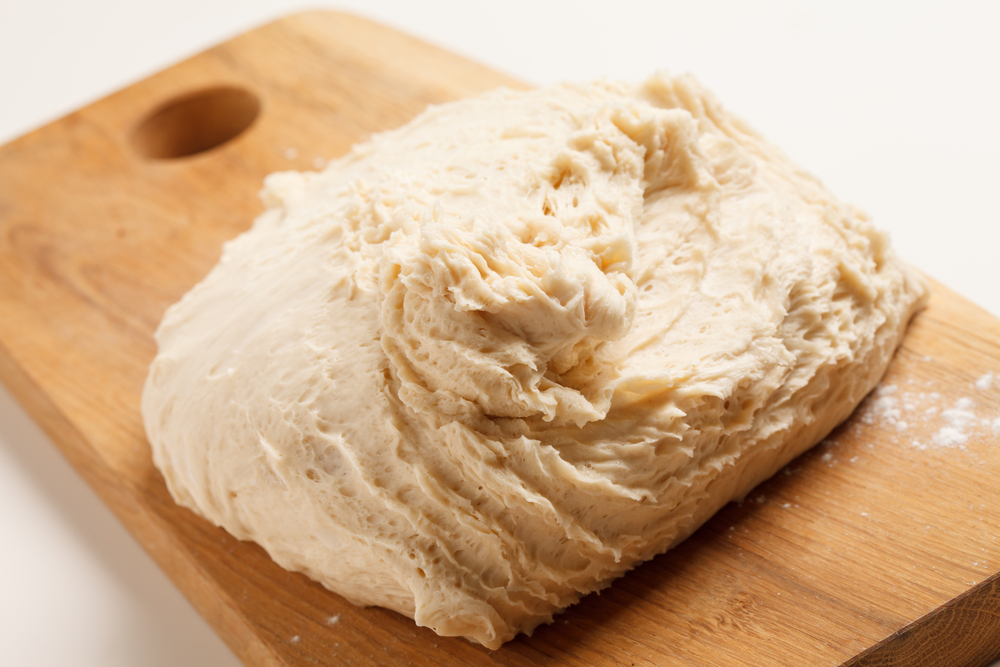
Texture
Over-proofing can cause the dough to become too light and airy. This can make it difficult to work with and shape, as it may not hold its structure well.
When baked, the dough may also have a less desirable texture, as it can be overly chewy or lacking in structure.
Flavor
Over-proofing can also affect the flavor of the dough. As the yeast consumes more and more sugar, it can produce too much alcohol. This can cause the dough to have a sour or off flavor that may not be desirable.
Structure
Over-proofing can also cause the dough to lose its structure. As the yeast produces more gas, it can cause the dough to become too elastic and stretchy.
This can make it difficult to shape and may result in a pizza that is misshapen or unevenly cooked.
Alcohol
As we mentioned earlier, over-proofing can cause the yeast to produce too much alcohol. This can not only affect the flavor of the dough but can also affect the final product.
When baked, the alcohol can evaporate and cause the pizza to have a less desirable texture.
In summary, over-proofing your pizza dough can lead to a variety of issues that can affect the final product. It is important to keep an eye on your dough and make sure you are not allowing it to rise for too long.
By finding the ideal proofing time through experimentation, you can ensure that your pizza dough is perfectly proofed every time.
How to Store Pizza Dough for Later Use
When making pizza dough, it’s always a good idea to make a little extra and store it for later use. Properly storing pizza dough will ensure that it stays fresh and ready to use whenever you’re ready to make a delicious homemade pizza.
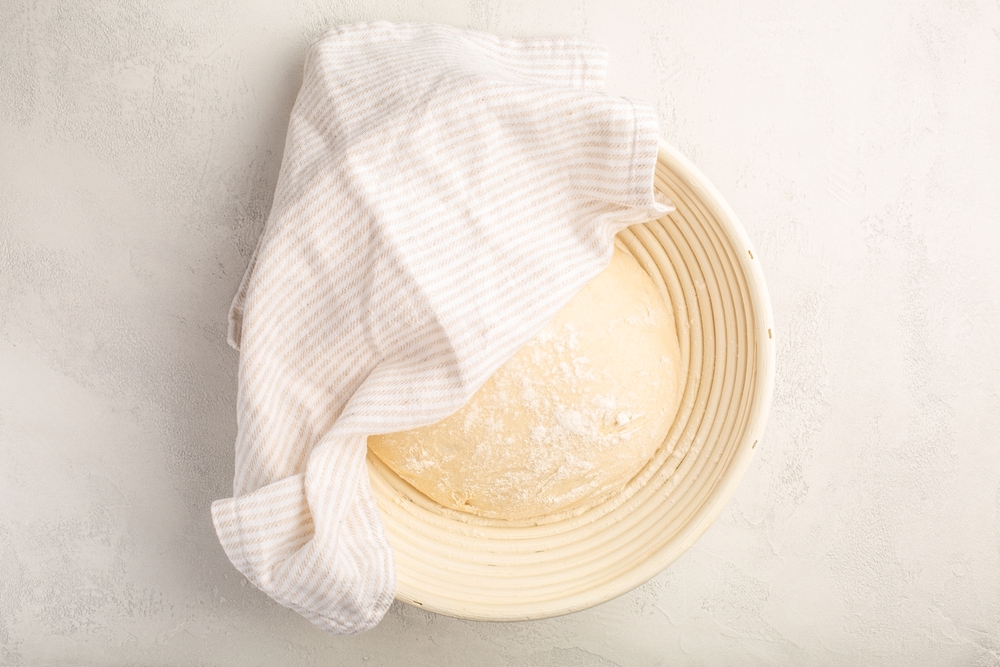
Here’s how to store pizza dough for later use:
Refrigerating Pizza Dough
If you’re planning to use your pizza dough within a couple of days, the best way to store it is in the refrigerator.
First, wrap the dough tightly in plastic wrap to prevent it from drying out. Then, place the wrapped dough in an airtight container or resealable plastic bag. This will help prevent any odors from the refrigerator from seeping into the dough.
When you’re ready to use the dough, remove it from the refrigerator and let it come to room temperature for about 30 minutes. This will make it easier to stretch and shape.
Alternatively, you can let the dough rise in the fridge for slow, cold fermentation. This will result in a more flavorful dough with a chewier texture.
Freezing Pizza Dough
If you’re not planning to use your pizza dough within a couple of days, the best way to store it is in the freezer. First, wrap the dough tightly in plastic wrap to prevent freezer burn. Then, place the wrapped dough in an airtight container or resealable plastic bag.
When you’re ready to use the dough, remove it from the freezer and let it thaw in the refrigerator overnight.
Alternatively, you can thaw the dough in the microwave, but be careful not to overheat it. Once the dough is thawed, let it come to room temperature for about 30 minutes before stretching and shaping.
Here’s a quick summary of how to store pizza dough:
| Storage Method | Steps |
|---|---|
| Refrigerator | Wrap in plastic wrap, place in an airtight container or bag, and let come to room temperature before using. |
| Freezer | Wrap in plastic wrap, place in an airtight container or bag, thaw in the refrigerator overnight or in the microwave, and let come to room temperature before using. |
By following these simple steps, you can store your pizza dough for later use and enjoy delicious homemade pizza anytime you want.
Conclusion
We have learned that the ideal rise time for pizza dough depends on several factors, including the recipe, the type of yeast used, and the desired flavor and texture of the crust.
Based on our research, we recommend letting pizza dough rise for at least 6-8 hours at room temperature, or up to 24 hours in the refrigerator for a slower, more flavorful rise.
However, some pizza makers prefer to let their dough rise for even longer periods, up to 72 hours or more, for a more complex flavor profile.
It is important to note that longer rise times may not always be better, as excessive fermentation can cause the dough to overproof and lose its structure, resulting in a flat, dense crust.
Therefore, it is important to monitor the dough closely and adjust the rise time as needed to achieve the desired results.
To summarize, the best rise time for pizza dough varies depending on several factors, and there is no one-size-fits-all answer.
Experiment with different rise times and techniques to find the one that works best for your pizza recipe and personal preferences. Happy baking!







Add comment